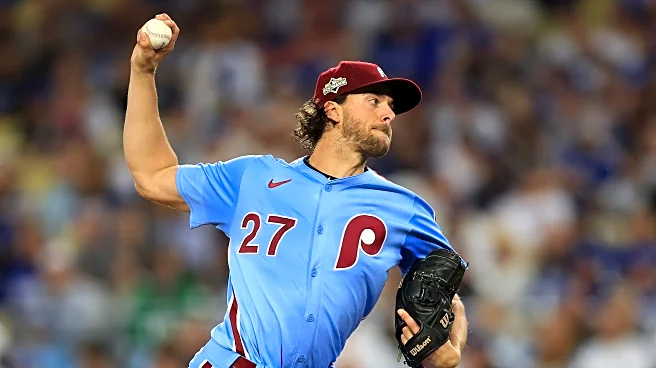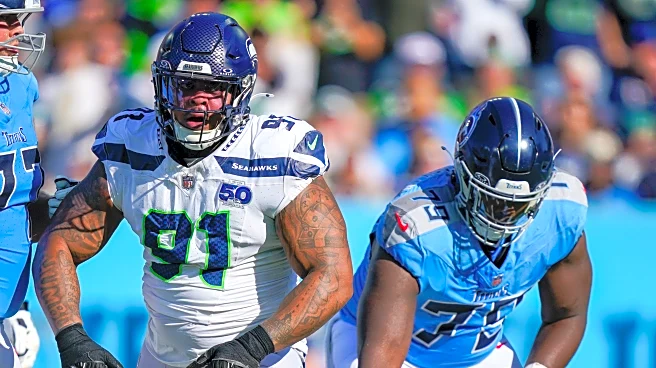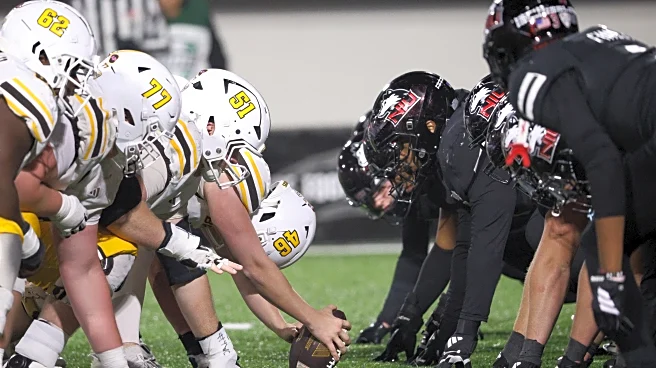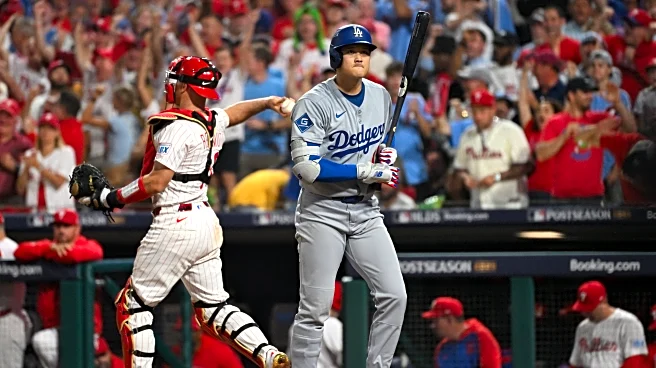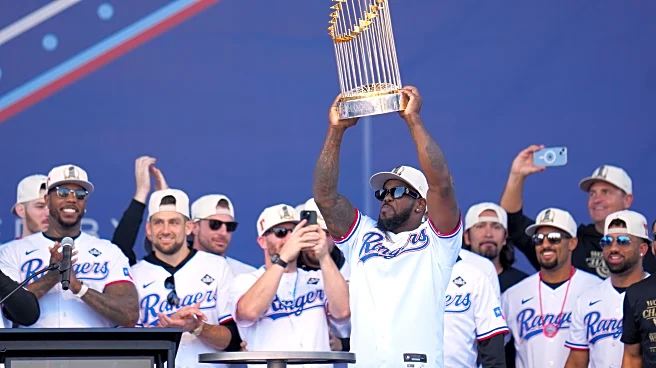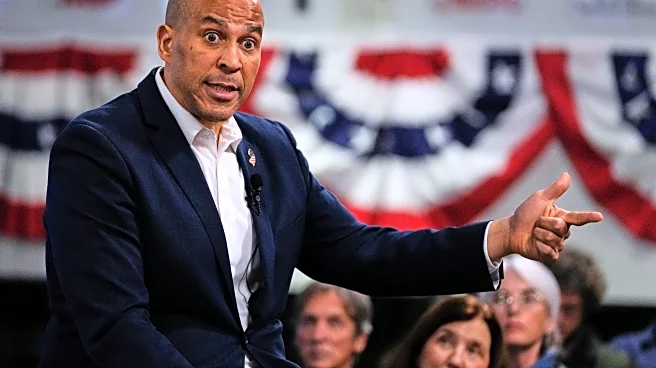Der Mensch tracht, un Gott lacht—“Man plans, god laughs”, when translated from Yiddish into English. Aaron Nola and the Phillies planned for seven seasons of steady, successful starts when they mutually
agreed to the contract extension that will keep the Louisianan in Philadelphia through 2030. Then whatever divinity or divinities doles out pastime-related fates looked askance at the shaggy-haired hurler, and delivered unto him a brutal, injury-plagued 2025. It was particularly dismaying because Nola really is a mensch— not in the term’s literal sense (meaning man), but in the more colloquial sense, meaning someone who is kind, loyal, considerate. Nola, the longest-tenured of the current Phils, a veteran presence on the mound and a philanthropist off of it, fits the bill. That makes the task of cataloguing his ill-fated 2025 campaign a particularly unhappy one.
2025 stats:
17 G, 94.1 IP, 6.01 ERA (4.58 FIP), 1.72 HR/9, 24 K%, 6.9 BB%, 0.9 fWAR
What went right
There was no quit in Nola. Suffering both a right ankle sprain in May and then the unexpected finding of a stress fracture in a rib as he attempted to make his return, Nola was truly snakebitten in 2025. But he endured the misfortune without complaint, fighting his way back to starting shape by August. There were some flashes of vintage Nola in the waning days of the campaign, with 6 innings of scoreless ball against the hated Mets and an 8-inning, 2-hit start against Minnesota reminding us of the Baton Rouge baller at his best. While Nola clearly didn’t have his best stuff in 2025, he did retain an elite ability to make batters chase, with his 33.5% rate ranking in the 93rd percentile.
What went wrong
His 2025 season went wrong from the jump, starting with a 5.1 inning, 5 run, two homer appearance in Washington. His first five starts saw him leaving the stadium with Ls. Pitcher Win/Loss record is now rightfully viewed as a less than savvy statistic, but it mostly told a true story here: Nola’s ERA through those five starts was 6.43, and his FIP was 4.99. Nola showed signs of putting it together after that, twirling seven innings of one-hit ball in the Friendly Confines for a no-decision before picking up his first win with a scoreless start against Arizona. On May 14th, he took to the mound for the second half of a doubleheader against the Cardinals with some reason for optimism. He stepped off of it in the midst of crisis. The line alone suffices: 3.1 IP, 12 hits, 9 earned runs, 3 homers.
Afterwards came the trip to the underworld the injured list. The Phillies’ very own Orpheus didn’t look back as he exited; even still, Eurydice only accompanied him occasionally in the back-half of his season. He had a few good starts sprinkled with messy ones: five of his eight starts following his return saw him allow four or more runs. Expecting a player to return from a pair of injuries and immediately return to proper form would be unreasonable; still, Nola’s ending to the season didn’t provide clear reassurance that his time in pitching purgatory was over.
The underlying statistics all support the idea that something was truly off with Nola this past season. Each of his five offerings declined in velocity. None of them truly seemed to work for him this year; all graded out as negative by run value, save for his changeup, which graded out as neutral. His primary pitches, the four-seamer and knuckle curve, were particularly problematic. He couldn’t seem to get strikes with the four-seamer, posting a 14.4 K% with it and a correspondingly low 13.9% whiff rate with it, both career-lows. His curveball took a different path: his K% and whiff rate were actually both up in 2025 as compared to the past two campaigns. Nevertheless, the pitch still produced a -3 run value, the first time it’s ever graded out as negative by that measure, in large part because when batters did hit it, they hit it hard, posting a slugging percentage of .462 and a wOBA of .349 against it. Those eye-poppingly poor results with ol’ Uncle Charlie seem to have been partially the result of bad luck: the xSLG and xwOBA for the pitch were .370 and .294, respectively. Still, in the context of everything else under the hood that points to real problems, that caveat only offers limited relief.
The future with the Phillies
Nola is signed through 2030, and by the time his contract is up there will be drivers on the road who have never known a day where Nola wasn’t a Phillie. Well, in the state of Michigan, where a learner’s permit can be obtained at the age of 14 years, 9 months. Not in Pennsylvania, which makes this factoid way less fitting here. Roll with it, okay? The point is that Nola’s future is with the Phillies, and the Phillies’ future is with Nola. Barring a shocking trade, Nola will be a Phillie for years to come. What exact role he plays in this future, however, is up in the air. He was extended with the expectation of being a top notch- number two starter. With five seasons left in the extension, the expectations are unclear. He has fallen behind Cristopher Sánchez, Ranger Suárez, and Jesús Luzardo in the minds of Phillies fans. We know how good he can be at his best and how unwatchable he can be at his worst. All pitchers have bad performances, but Nola’s range of performance is unusually wide. Somewhere in that band, from almost unplayable to almost elite, is the true Aaron Nola. But where, exactly, he truly stands remains for the fates to know, and for us to fret over.
